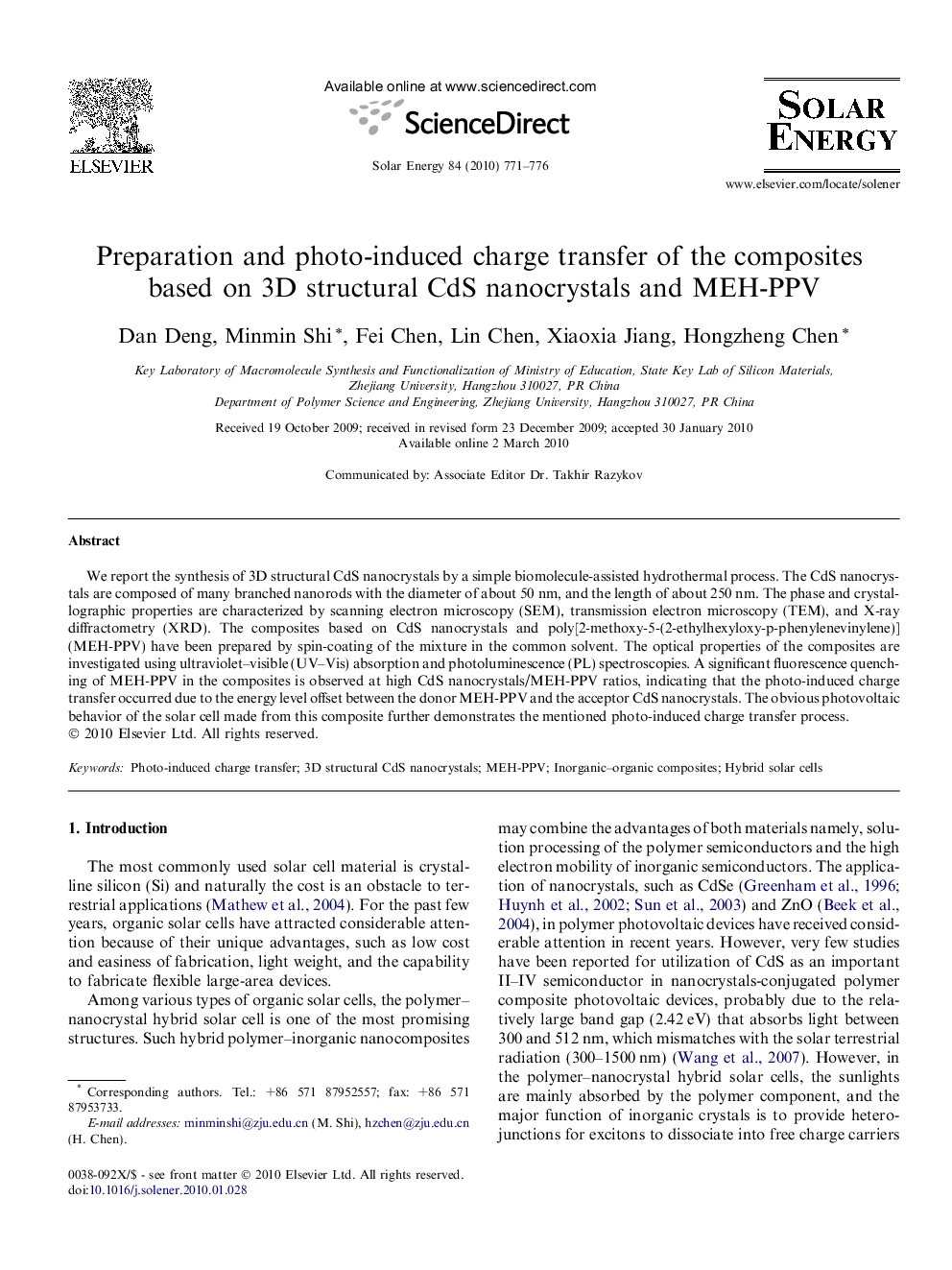| Article ID | Journal | Published Year | Pages | File Type |
|---|---|---|---|---|
| 1551308 | Solar Energy | 2010 | 6 Pages |
We report the synthesis of 3D structural CdS nanocrystals by a simple biomolecule-assisted hydrothermal process. The CdS nanocrystals are composed of many branched nanorods with the diameter of about 50 nm, and the length of about 250 nm. The phase and crystallographic properties are characterized by scanning electron microscopy (SEM), transmission electron microscopy (TEM), and X-ray diffractometry (XRD). The composites based on CdS nanocrystals and poly[2-methoxy-5-(2-ethylhexyloxy-p-phenylenevinylene)] (MEH-PPV) have been prepared by spin-coating of the mixture in the common solvent. The optical properties of the composites are investigated using ultraviolet–visible (UV–Vis) absorption and photoluminescence (PL) spectroscopies. A significant fluorescence quenching of MEH-PPV in the composites is observed at high CdS nanocrystals/MEH-PPV ratios, indicating that the photo-induced charge transfer occurred due to the energy level offset between the donor MEH-PPV and the acceptor CdS nanocrystals. The obvious photovoltaic behavior of the solar cell made from this composite further demonstrates the mentioned photo-induced charge transfer process.
